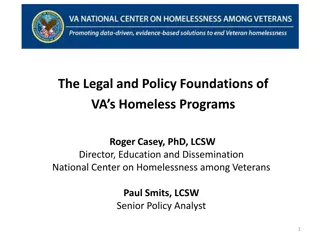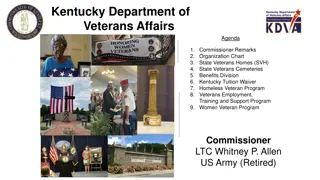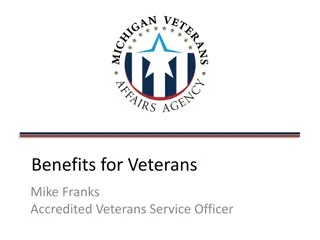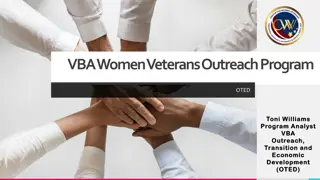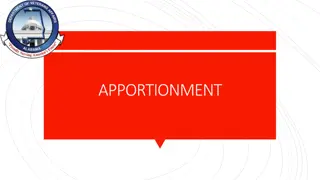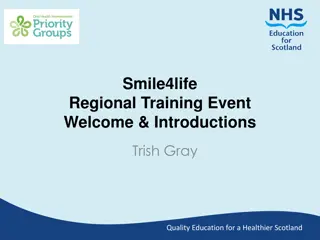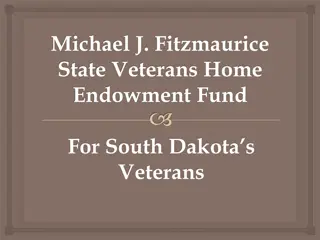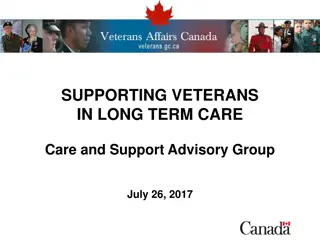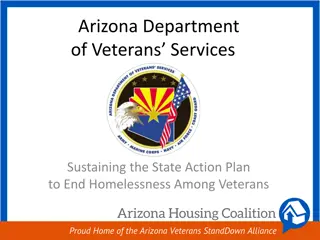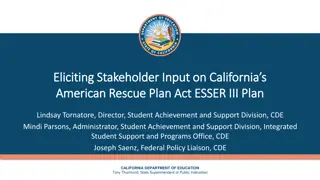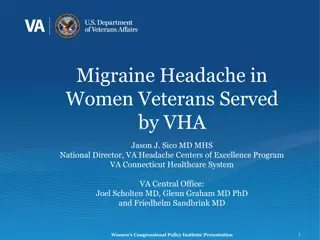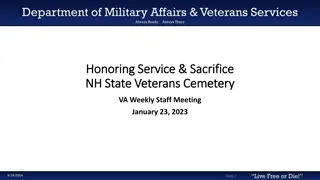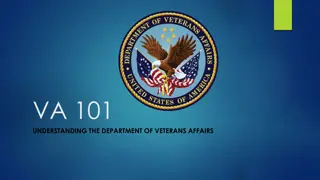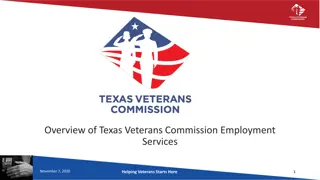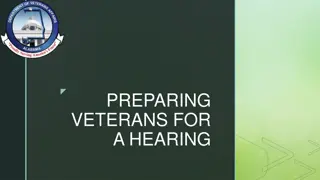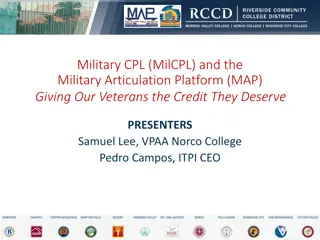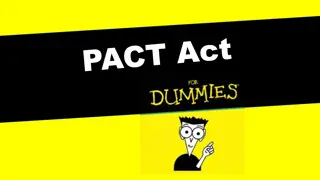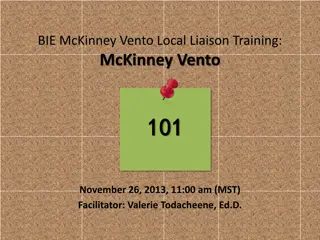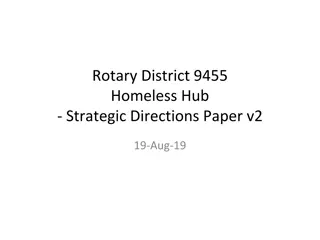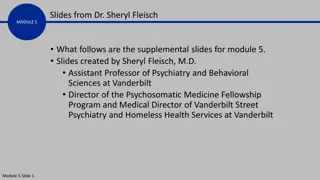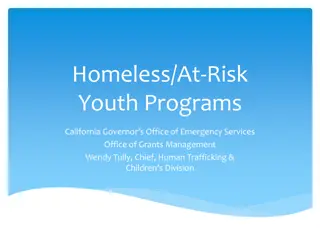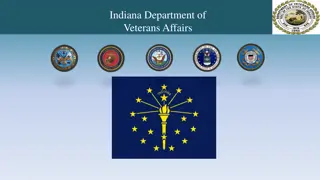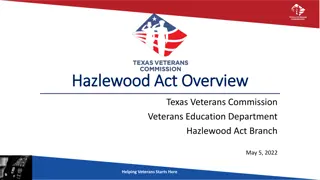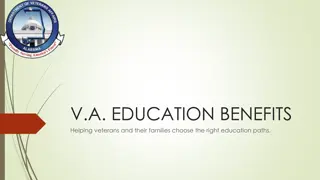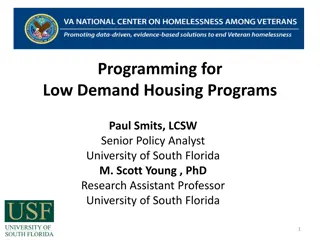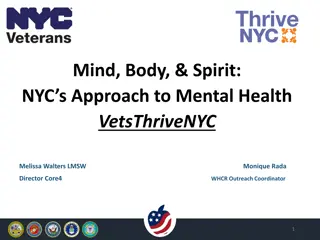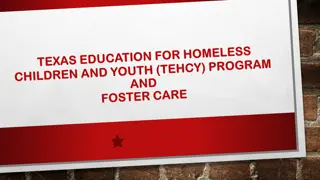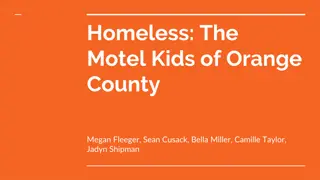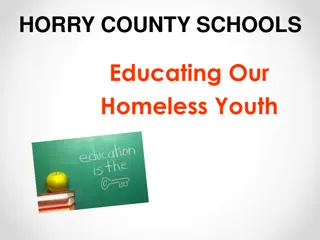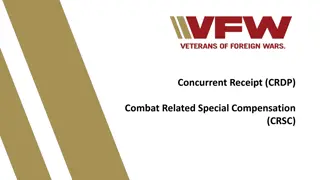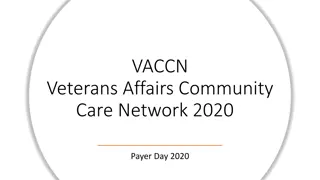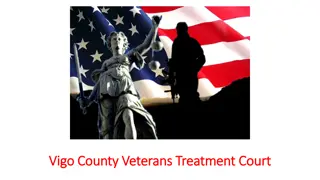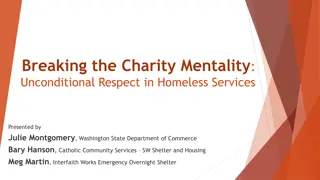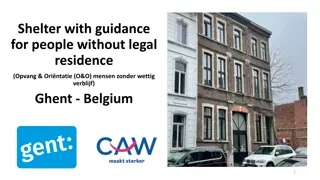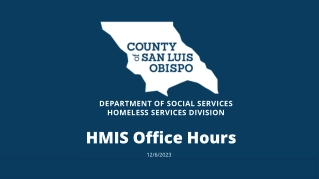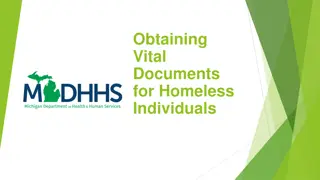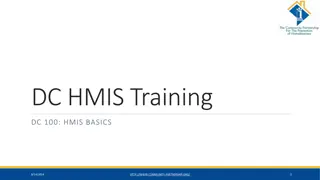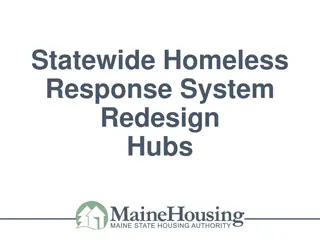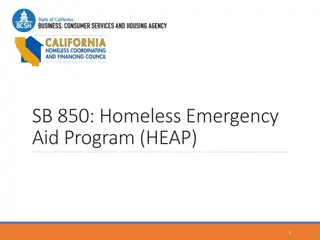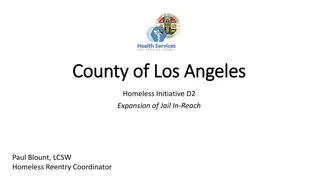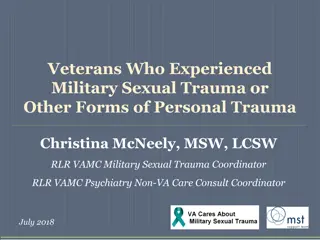Supporting Homeless Veterans: CVAF Missions and Programs
Serving veterans and individuals in need, Central Valley Veterans Assistance Foundation (CVAF) in Kern County operates programs promoting housing stability and providing supportive services. Believing in basic human rights for all, CVAF tackles challenges faced by veterans, including homelessness, lack of support, and limited income streams. Through referrals and outreach, CVAF offers rapid re-housing, transitional housing, and permanent supportive housing to assist veterans and their families in need.
Download Presentation

Please find below an Image/Link to download the presentation.
The content on the website is provided AS IS for your information and personal use only. It may not be sold, licensed, or shared on other websites without obtaining consent from the author. Download presentation by click this link. If you encounter any issues during the download, it is possible that the publisher has removed the file from their server.
E N D
Presentation Transcript
PRESENTERS: VANESSA WILLIAMS-GRANTS/HR OFFICER ASHLEY REYES-SSVF PROGRAM DIRECTOR
CVAF MISSION To serve veterans and other individuals and their families who are homeless, at risk, and low income. To restore and improve lives by alleviating homelessness through information, advocacy, and service. ------------------------------------------------------------------------- We have been operating veteran supportive services and housing programs in Kern County since 2000
WE BELIEVE food, water, and shelter should be seen as a basic human right and not a privilege. no one should have to face homelessness or hunger. it is not only our duty to assist those in need, but it is our civic responsibility. By using housing first components we are removing barriers for our Veterans.
WHAT IS A VETERAN? Veteran means a person who served in the active military, naval, or air service, regardless of length of service, and who was discharged or released therefrom. Veteran excludes a person who received a dishonorable discharge from the Armed Forces or was discharged or dismissed from the Armed Forces by reason of the sentence of a general court-martial. (DEPARTMENT OF VETERANS AFFAIRS, 38 CFR Parts 61 and 62 RIN 2900 AQ07, Homeless Veterans).
CHALLENGES FOR VETERANS Incarceration or legal issues Poor rental and credit history Lack of VA emergent care locally Behavioral health (22 veterans commit suicide each day (1 every 65 minutes) Inpatient/Outpatient treatment Lack of natural circle of support Family or friends Other community connections
OTHER CHALLENGES Low housing inventory Self sustaining income or underemployed/unemployment Limited income streams/ fixed. (SSA, SSI, SSDI, VA COMP, VA NSCB) Access to VA healthcare
CVAF REFERRALS Through referrals and direct outreach, nonprofit agencies and community cooperatives use CVAF programs to quickly house Veterans and their families who are homeless and keep others from slipping into homelessness by providing time-limited supportive services that promote housing stability. Referrals are then routed to all CVAF programs to assess for eligibility. Such as, SSVF (Rapid re-housing, homeless prevention) GPD Transitional Housing (Bridge/Service Intensive) Transition in Place Park 20th Permanent Supportive Housing
The Supportive Services for Veteran Families (SSVF) program was established in 2011 to assist very low-income Veterans. The program provides case management and supportive services to prevent the imminent loss of a Veteran s home or identify a new, more suitable housing situation for the individual and their family; or to rapidly re-house Veterans and their families who are homeless and might remain homeless without this assistance. The goal for veterans in the SSVF program is to remain stably housed after this assistance ends.
TYPES OF SERVICES PROVIDED: Temporary Financial Assistance(TFA) Emergency Housing Assistance Rental assistance Utility assistance Security Deposit Car Maintenance Transportation Childcare Supportive Services Rapid resolution/diversion Financial literacy Housing search Landlord mediation Healthcare navigation Refer to mainstream resources, as needed.
SSVF ELIGIBILITY Veterans may be single or part of a family in which the head of the household, or spouse, is a veteran. Very low income: making less than 50% of the area median income (AMI). SSVF can assist individuals in the following two categories Homeless Prevention Individuals facing eviction or couch surfers (Households in this category must meet threshold requirements) Rapid Re-Housing Literally Homeless
LENGTH OF SERVICE DELIVERY Time frame of services are driven by the following: Veterans case plan and the goals established though case management. Program design is traditionally for 90 days, based on the veteran s needs and participation length of services may be extended. After 90 days the Veteran is re-certified to ensure that he or she remain qualified to receive services based on program regulations.
GRANT AND PER DIEM TRANSITIONAL HOUSING VA funds an estimated 600 agencies that provide over 14,500 beds for eligible Veterans. CVAF is the sole VA Grant & Per Diem provider in Kern County. As a Grant & Per Diem grantee, CVAF operates four types of transitional housing program models. Bridge-23 beds Service-intensive transitional housing (SITH)-25 beds Intensive transitional housing (National Guard/Reservist, not eligible for VHA)-4 overflow beds Transition in Place (TIP)- scattered site.
Targeted Population: Homeless Veterans that have been offered and accepted a permanent housing intervention [e.g., SSVF, HUD VASH, Housing Coalition/ Continuum of Care (CoC) Vouchers; and are not able to immediately enter the permanent housing. BRIDGE HOUSING MODEL Model Overview: Bridge housing is intended to be a short-term stay (ideally 90 days) in transitional housing for Veterans with pre- identified permanent housing destinations.
SERVICE INTENSIVE TRANSITIONAL HOUSING Targeted Population: Homeless Veterans who choose a supportive transitional housing environment providing services prior to entering permanent housing. Model Overview: Provides transitional housing and a milieu of services that facilitate individual stabilization and movement to permanent housing as rapidly as clinically appropriate.
Targeted Population: National Guard/reservists who do not qualify for traditional Veteran services due to not meeting federal definition of Veteran. CVAF has decided to expand transitional housing services to assist the gaps of services for this population. INTENSIVE TRANSITIONAL HOUSING Model Overview: Provides transitional housing and a milieu of services that facilitate individual stabilization and movement to permanent housing with connecting population to mainstream resources.
Targeted Population: Homeless Veterans who choose a supportive transitional housing environment providing services prior to entering permanent housing. Model Overview: The TIP housing model offers Veteran residents housing in which support services transition out of the residence over time, rather than the resident leaving the residence. TIP offers transition and stabilization services to Veterans in independent apartments leased by CVAF. TRANSITION- IN-PLACE The eventual goal for Veterans is to assume occupancy of the unit after they stabilize and no longer need support. This leaves the Veteran in place and not forced to find other housing. It is expected that Veterans will receive transition in place supportive services for approximately 6 to 12 months before assuming permanent occupancy of the unit.
OTHER CVAF PROJECTS Homeless Housing Assistance Program Voucher and Supportive Services Low Barrier Shelter Rent and Utility Assistance Program-Supportive Services Housing for Harvest Program Empowering Veterans in Kern Co. (dental services, food pantry, women veterans services) Covey Cottages (permanent supportive housing for veterans)


